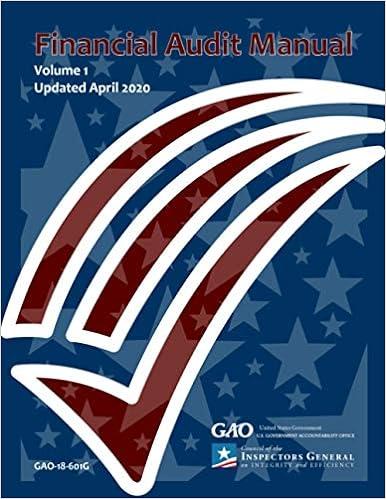Question
3. At the beginning of June, Kimber Toy Company budgeted 19,000 toy action figures to be manufactured in June at standard direct materials and direct
3.
At the beginning of June, Kimber Toy Company budgeted 19,000 toy action figures to be manufactured in June at standard direct materials and direct labor costs as follows:
| Direct materials | $19,000 |
| Direct labor | 9,500 |
| Total | $28,500 |
The standard materials price is $0.50 per pound. The standard direct labor rate is $10.00 per hour. At the end of June, the actual direct materials and direct labor costs were as follows:
| Actual direct materials | $17,000 |
| Actual direct labor | 8,500 |
| Total | $25,500 |
There were no direct materials price or direct labor rate variances for June. In addition, assume no changes in the direct materials inventory balances in June. Kimber Toy Company actually produced 16,500 units during June.
Determine the direct materials quantity and direct labor time variances. Round your per unit computations to two decimal places, if required. Enter a favorable variance as a negative number using a minus sign and an unfavorable variance as a positive number.
| Direct materials quantity variance | $. ? | FAVORABLE OR UNFAVORABLE |
| Direct labor time variance | $ ? | FAVORABLE OR UNFAVORABLE |
6.
Direct Materials, Direct Labor, and Factory Overhead Cost Variance Analysis
Mackinaw Inc. processes a base chemical into plastic. Standard costs and actual costs for direct materials, direct labor, and factory overhead incurred for the manufacture of 6,800 units of product were as follows:
| Standard Costs | Actual Costs | ||
| Direct materials | 8,800 lb. at $5.40 | 8,700 lb. at $5.20 | |
| Direct labor | 1,700 hrs. at $16.80 | 1,740 hrs. at $17.20 | |
| Factory overhead | Rates per direct labor hr., | ||
| based on 100% of normal | |||
| capacity of 1,770 direct | |||
| labor hrs.: | |||
| Variable cost, $3.50 | $5,890 variable cost | ||
| Fixed cost, $5.50 | $9,735 fixed cost | ||
Each unit requires 0.25 hour of direct labor.
Required:
a. Determine the direct materials price variance, direct materials quantity variance, and total direct materials cost variance. Enter a favorable variance as a negative number using a minus sign and an unfavorable variance as a positive number.
| Direct materials price variance | $ | FAVORABLE OR UNFAVORABLE |
| Direct materials quantity variance | FAVORABLE OR UNFAVORABLE | |
| Total direct materials cost variance | $ | FAVORABLE OR UNFAVORABLE |
b. Determine the direct labor rate variance, direct labor time variance, and total direct labor cost variance. Enter a favorable variance as a negative number using a minus sign and an unfavorable variance as a positive number.
| Direct labor rate variance | $ | FAVORABLE OR UNFAVORABLE |
| Direct labor time variance | FAVORABLE OR UNFAVORABLE | |
| Total direct labor cost variance | $ | FAVORABLE OR UNFAVORABLE |
c. Determine variable factory overhead controllable variance, the fixed factory overhead volume variance, and total factory overhead cost variance. Enter a favorable variance as a negative number using a minus sign and an unfavorable variance as a positive number.
| Variable factory overhead controllable variance | $ | FAVORABLE OR UNFAVORABLE |
| Fixed factory overhead volume variance | FAVORABLE OR UNFAVORABLE | |
| Total factory overhead cost variance | $ | FAVORABLE OR UNFAVORABLE |
Step by Step Solution
There are 3 Steps involved in it
Step: 1

Get Instant Access to Expert-Tailored Solutions
See step-by-step solutions with expert insights and AI powered tools for academic success
Step: 2

Step: 3

Ace Your Homework with AI
Get the answers you need in no time with our AI-driven, step-by-step assistance
Get Started


